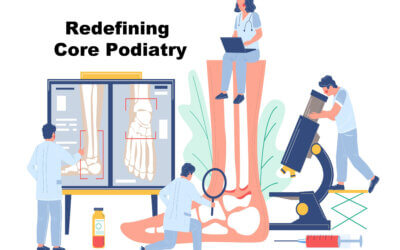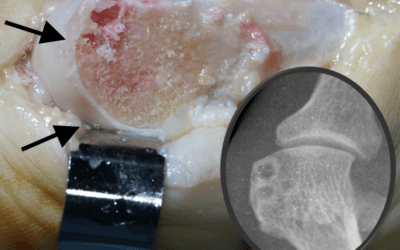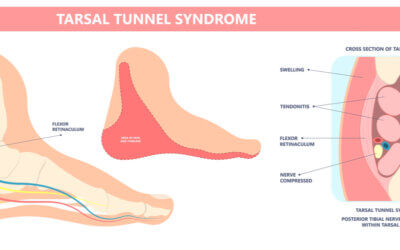Clinical Articles
Journals are a Marmite thing!
Podiatry Now was unsaddled with the need for higher end academic articles but still produced articles with academic rigour and introduced tougher admission criteria along the lines of an academic design.
Journal of Foot and Ankle Research (JFAR) was launched in July 2008 as the official research publication of the Society of Chiropodists and Podiatrists (UK) and the Australasian Podiatry Council, replacing both the British Journal of Podiatry and the Australasian Journal of Podiatric Medicine. Many changes. Decisions have been made to professionalise the journal for better impact factor, to improve quality and offer better peer review, while retaining a membership publication
Writing for ConsultingFootPain
When asked to write for ConsultingFootPain (CFP), I am asked by many how long should an article should be, what format and when it should be sent in – the deadline. These are all easy questions to answer, but it is worth putting more detail together if you want to write for ConsultingFootPain.
This article is a quick read – under 1000 words which is around a 4-minute read. Reading times
Core Podiatry has Changed
When at college in the mid-seventies there was a general understanding that we all were expected to provide a ‘full-treatment’ – FTx. First of all the FTx implied managing nails and hard skin, apply a cornucopia of padding, whichever fitted best to the needs of the patient and the properties of foam, felt, fleece or foam-o-felt. Appliances (not orthoses in the seventies) became the pinnacle of our prescribing and manufacturing skills. Biomechanics was not a term known to most British podiatrists. Local anaesthetics were in their infancy.
The Research Professor
Cathy Bowen says she literally ‘fell’ into the podiatry profession. “I had no idea what I wanted to do. I loved biological sciences, wanted to do something in health, wasn’t going to get the grades for medicine, which again is typical of my generation.”
The subject of biomechanics grabbed her in 1984, based around pattern recognition and helping people to be physically active and mobile. She loved biology but didn’t think she could aspire to medicine. The profession at the time was called chiropody and had not quite metamorphosed into podiatry and so this was a time of great change. After graduating from Salford, she took a job in Milton Keynes and found herself engaged with student placements. At the time this was relatively new as most practical education in training was conducted in the school clinics. Clinical trainers had to extend their skills with teaching experience and the embers of her future were glowing quietly at her Stantonbury clinic.
Cancer Specialist in Podiatry
“There is a lot of management time involved in running a private practice and with ever-increasing costs. Examples include regulation, maintaining appropriate health and safety protocols, data security and insurance, but perhaps more significantly the way we now operate has changed. It used to just be phone calls to arrange appointments, adverts in the local paper, paper patient records and cash payments. Additional costs include website design and maintenance, running payroll and providing pensions for employees, online booking systems, and credit card machines. It is easy to overlook many of these initial steps when developing a private practice as a viable business model. Getting sucked into a lot of start-up expense without fully appreciating the number of patients they’ll need to treat before it becomes profitable is something to avoid.”
Good Clinicians think outside the box
The Black Box Thinker concept comes from incident data within aviation. Aircraft have a so-called Black Box, which happens to be orange, and even when disasters are fatal, events are recorded until the aircraft ceases to be a conveyance for travelling. Learning from the data stored in this so-called black box continues to be valuable after the event. However, the real value of the data can only come from sharing information openly without attributing blame. Beyond aviation, Syed points out, it is not about creating a literal black box but a willingness to investigate the lessons and exploit their value.
Cartilage damage in hallux valgus
While the observation of cartilage damage often confounds clinicians on how patients manage such extensive cartilage damage this paper visits the real reason behind joint pain.
A marmite profession or golden treacle?
FHP or Podiatry. This was a choice for Catherine Lacey. Catherine came straight from school into nursing. She had always wanted to be a nurse and has now worked in the NHS and abroad for over 40 years. She went for her routine dental care one day and the receptionist noticed that she was limping. As there was a chiropodist at the practice the receptionist persuaded Catherine to book in to see him. The chiropodist had qualified through SMAE and had been a professional footballer. After retirement he had trained as a chiropodist and managed some painful corns on Catherine’s foot. Fifteen minutes later she was dancing down the corridor.
Tarsal Tunnel Pain
I want to introduce you to the condition called tarsal tunnel syndrome as a cause of heel pain but with the distinctive quality that the pain burns. The second feature that gives the condition away is that feeling of fullness, a sort of exploding sensation when exercising worsening with standing walking or running. Sometimes this type of problem pain is called referred. This means that the source of pain and location may not match. The pain may be in front of the foot but is related to the structures in the hind part of the foot.
More about heel problems
The most common types of heel pain problems arise from general overuse or repetitive heel pad strain but heel pain is complex and if left can resist treatment. In this article, there are four key subjects that you need to know about. The first relates to children while the other conditions are adult related. There are conditions such as rheumatoid arthritis, gout and ankylosing spondylitis that may affect the heel as well as rarer conditions and of course fractures. If the pain does not subside with self-help remedies recommended after several weeks, then seek professional medical help from a podiatrist or medical practitioner.









